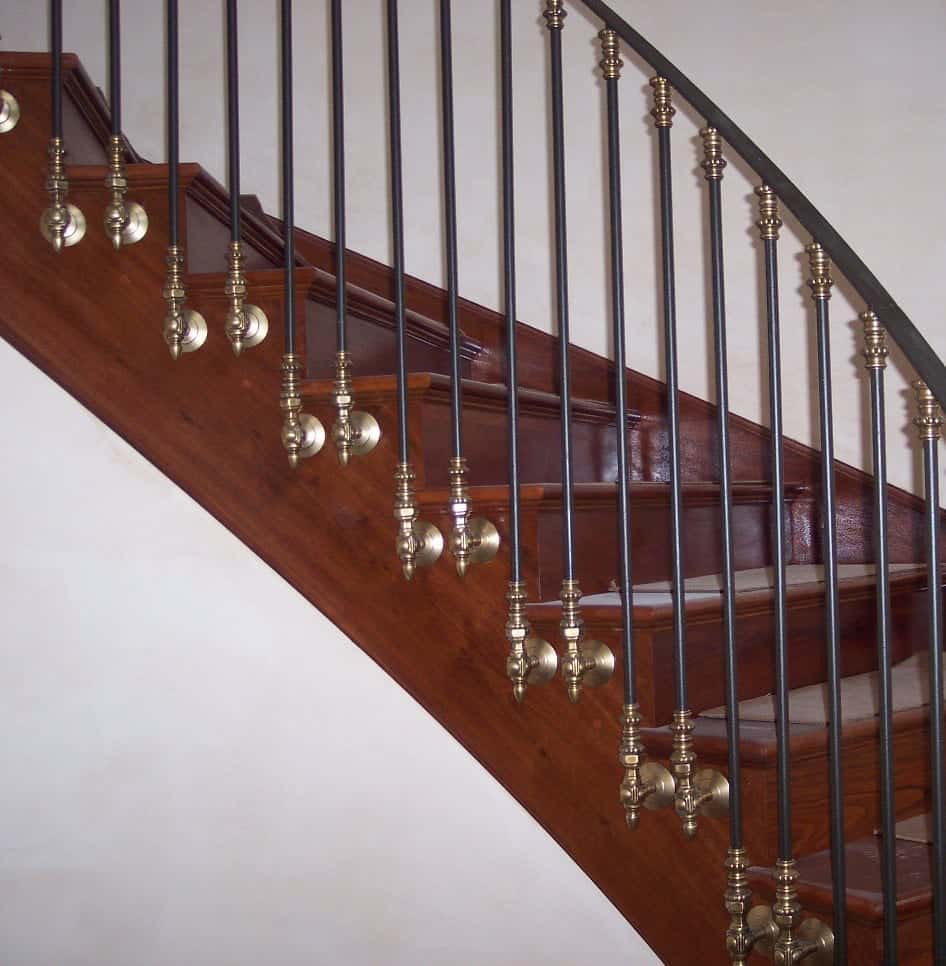
DJA provides inspiration for your designs and supplies top quality components. We can recommend highly skilled fabricators who use our components. Customers can also specify DJA specific components or designs to their fabricator or contractor.
Our office will be closed on Friday, July 4th in commemoration of Independence Day.
We will resume our regular activities on Monday, July 7th.
When working with wrought iron, a big decision is whether or not to galvanize it. Galvanizing protects wrought iron from rust and corrosion, making it a more durable and long-lasting option. This guide will explain everything you need to know about galvanized wrought iron, including what it is, why it matters, and how it can enhance your projects.
Galvanized wrought iron is wrought iron that has been coated with a protective layer of zinc. This process, called galvanization, prevents rust and corrosion by creating a barrier between the iron and the environment.
There are two primary methods of galvanization:
Hot-dip galvanizing is the most common method for wrought iron, as it provides superior protection.

Galvanizing wrought iron comes with several advantages that make it an excellent choice for outdoor and indoor projects. Let’s break them down:
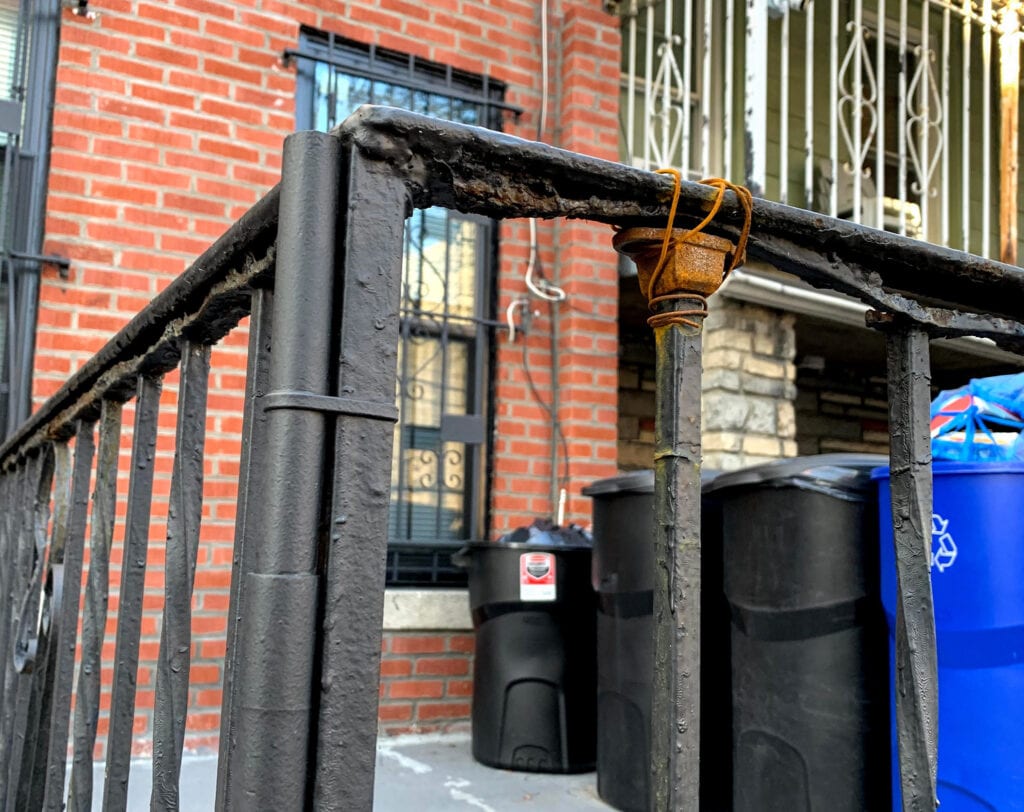
The zinc coating acts as a shield, preventing moisture and oxygen from reaching the iron. This is especially important for outdoor applications where exposure to rain, snow, and humidity can cause unprotected wrought iron to rust.
Galvanizing can help your work last decades with minimal maintenance. The zinc coating extends the life of the iron by preventing wear and tear caused by the elements.
While galvanizing adds an upfront cost, it reduces long-term maintenance expenses. Repainting and repairing rusted iron can add up over time. Galvanizing minimizes the need for these fixes.
The shiny finish of freshly galvanized wrought iron can be visually appealing. Over time, the zinc develops a matte patina, which many people find attractive.
Galvanized wrought iron is eco-friendly. Its durability means fewer replacements, reducing waste. Zinc is also recyclable, further lowering its environmental impact.
Galvanized wrought iron is ideal for projects exposed to harsh conditions. Here are some examples where it shines:

Outdoor wrought iron structures face constant exposure to the elements. Galvanizing ensures these pieces remain sturdy and rust-free for years.
For railings, especially those near the ocean or in humid climates, galvanizing prevents salt and moisture from causing corrosion.
Wrought iron beams and supports benefit from galvanizing in industrial or residential settings, particularly where moisture is present.
Even decorative items like planters and trellises can benefit from galvanizing, as it preserves their look and structural integrity.
The galvanization process is relatively straightforward but requires expertise to ensure proper application. Here’s an overview:
The wrought iron is cleaned to remove dirt, oil, and rust. This step is critical to ensure the zinc adheres properly.
A chemical flux is applied to the clean surface to prepare it for galvanizing. This prevents oxidation during the process.
The wrought iron is submerged in molten zinc, coating it entirely. The zinc bonds to the surface and forms a protective layer. For more details about the galvanizing process and its standards, visit the American Galvanizers Association.
After galvanizing, the iron is cooled and inspected for any missed areas or imperfections.

For certain projects, a powder-coated finish can be applied over the zinc for additional protection and aesthetic purposes.
While galvanizing offers many benefits, some concerns are worth addressing:
Galvanizing does add to the initial cost of a project. However, the long-term savings on maintenance often outweigh this.
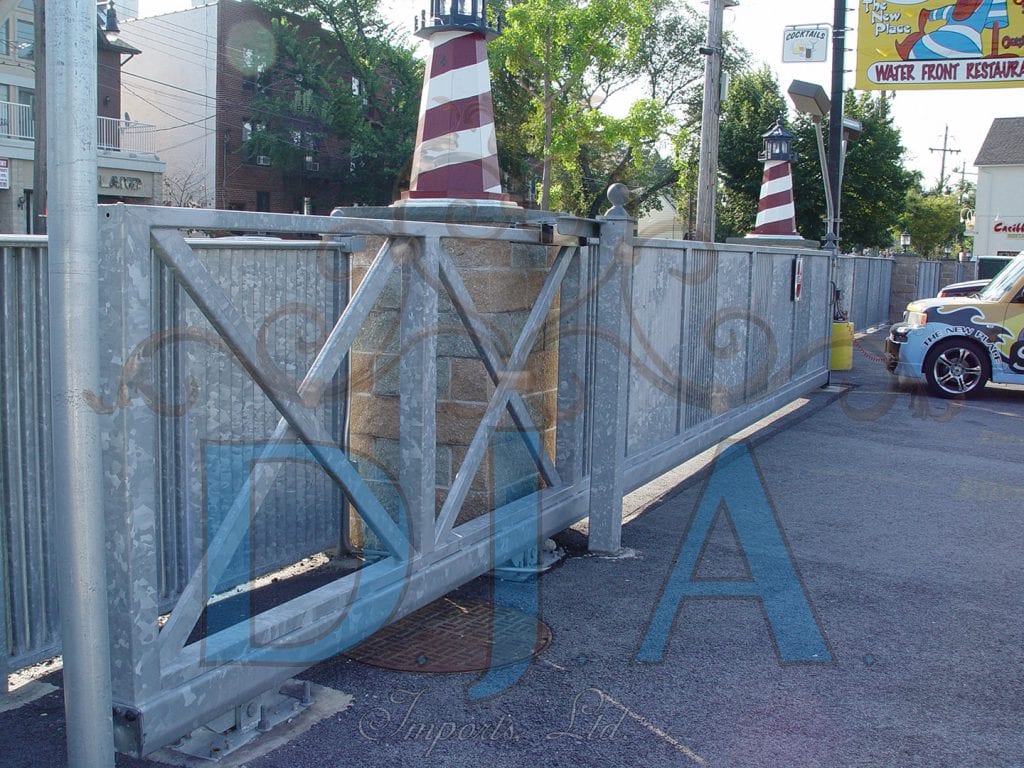
Not everyone likes the look of galvanized wrought iron, especially if they prefer the raw iron aesthetic. Painting over the zinc layer is an option for those seeking a different finish.
During hot-dip galvanizing, the high temperatures can sometimes warp intricate ironwork. Experienced professionals can minimize this risk.
Although galvanized wrought iron requires less upkeep than untreated iron, some maintenance ensures its longevity:
Use soap and water to clean dirt and debris from the surface. Avoid abrasive cleaners that could scratch the zinc coating.
Check for any scratches or chips in the zinc coating, as these can expose the iron to rust.
In rare cases where the zinc coating wears thin, additional galvanizing or a zinc-rich paint can restore protection.
Chemicals like acid or chlorine can damage the zinc layer. Use mild cleaning solutions for best results.
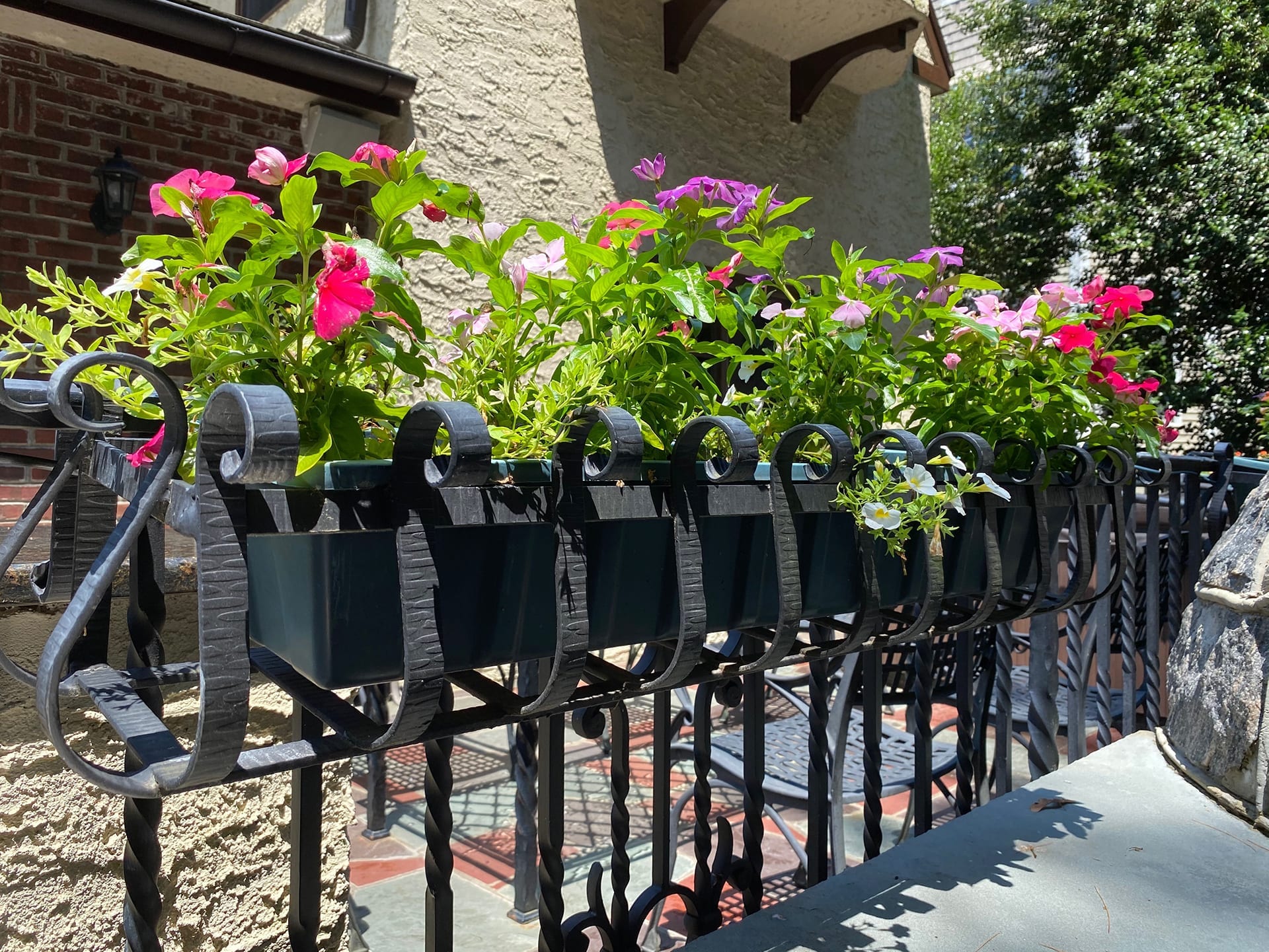
Galvanized wrought iron combines strength, durability, and aesthetic appeal. It’s an investment in the longevity of your project and reduces the need for constant maintenance. Whether you’re installing a fence, a gate, or an industrial support structure, galvanizing ensures your wrought iron will stand the test of time.
In general, we recommend hot dipped galvanizing for any exterior metalwork project that uses steel or cast iron components. Based on our decades of fabrication experience in both residential and commercial settings, here are some tips we’ve compiled to help ensure your project is a success:
Tubes, fully-enclosed caprails, and channel assemblies need small, drilled holes to allow molten zinc to flow freely. This ensures full coverage inside and out. Always consult your local galvanizer for specific guidelines.
The high heat of the zinc bath can cause thinner materials to warp. Use ¼” or thicker solid plates, especially for structural elements like bottom plates in gate fabrications. This precaution helps maintain the integrity of the design. (See below for a gate photo example.)
Steel and cast iron have different optimal galvanizing temperatures. To avoid complications, galvanize them separately and then mechanically fasten them together for the best results.
High-quality, professional welds are essential for a smooth and durable finish after galvanizing. Poorly executed welds can create weak points and aesthetic flaws.
Preparation work and job minimums may be required by your local galvanizer. These can include cleaning, pre-treatment, or ensuring parts meet specific size or design criteria. Check with your galvanizer early in the planning process.
The size of the zinc bath at your local galvanizer determines the maximum dimensions of a single section. These limits range from 10 feet to 40 feet depending on the facility. Larger sections also require stronger materials to prevent warping. For oversized pieces, consider metalizing as an alternative.
For long-lasting results, incorporate stainless steel fasteners throughout your project. They resist corrosion and work well with galvanized materials.
Some finishing work, such as removing drips or smoothing surfaces, is typical after galvanizing. Use a worn sanding disk to clean up edges without damaging the zinc layer.
Hot-dip galvanizing is not recommended for applications where an ultra-smooth surface is critical, such as entry doors or decorative elements. In such cases, alternative coatings or finishes may be better suited.
By following these guidelines, fabricators can design and produce wrought iron projects that withstand the test of time. For additional fabrication tips and expert advice, consult your local galvanizer or visit the American Galvanizers Association.
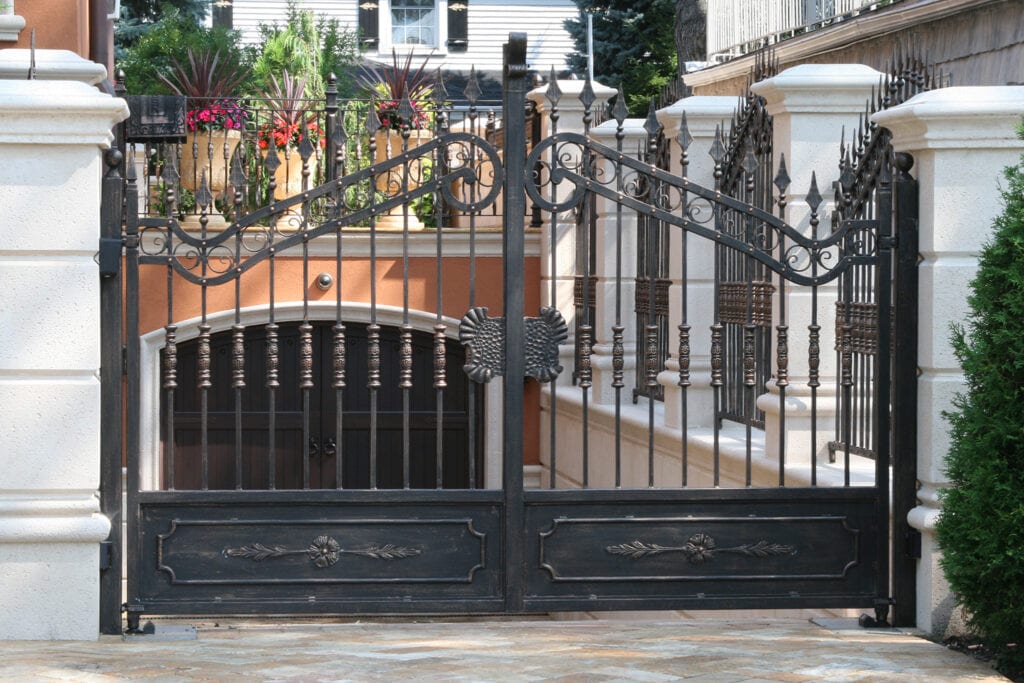
Choosing galvanized wrought iron is a smart decision for anyone looking to create durable and attractive structures. It protects your investment from rust and corrosion, ensuring it lasts for decades. Whether you’re working on a backyard fence or a commercial project, galvanized wrought iron is a reliable and cost-effective solution.
By understanding the benefits, process, and maintenance of galvanized wrought iron, you can make informed decisions for your projects. When you’re ready to start, trust experts who specialize in wrought iron and galvanizing to deliver the best results.
Galvanized wrought iron can last 50 years or more when properly maintained. Its zinc coating provides durable protection against rust and corrosion, even in harsh environments.
Yes, galvanized wrought iron can be painted, but proper preparation is essential. Use a primer designed for galvanized metal to ensure the paint adheres effectively.
Galvanizing is an eco-friendly process because it extends the lifespan of wrought iron, reducing waste. Additionally, zinc is fully recyclable, further minimizing environmental impact.
While galvanizing provides excellent protection against rust, it may not prevent corrosion from extreme chemical exposure. For specialized environments, additional coatings may be required.
DIY galvanizing kits are available, but the process can be challenging for large or intricate projects. Professional galvanizing ensures a high-quality and durable finish.
DJA provides inspiration for your designs and supplies top quality components. We can recommend highly skilled fabricators who use our components. Customers can also specify DJA specific components or designs to their fabricator or contractor.